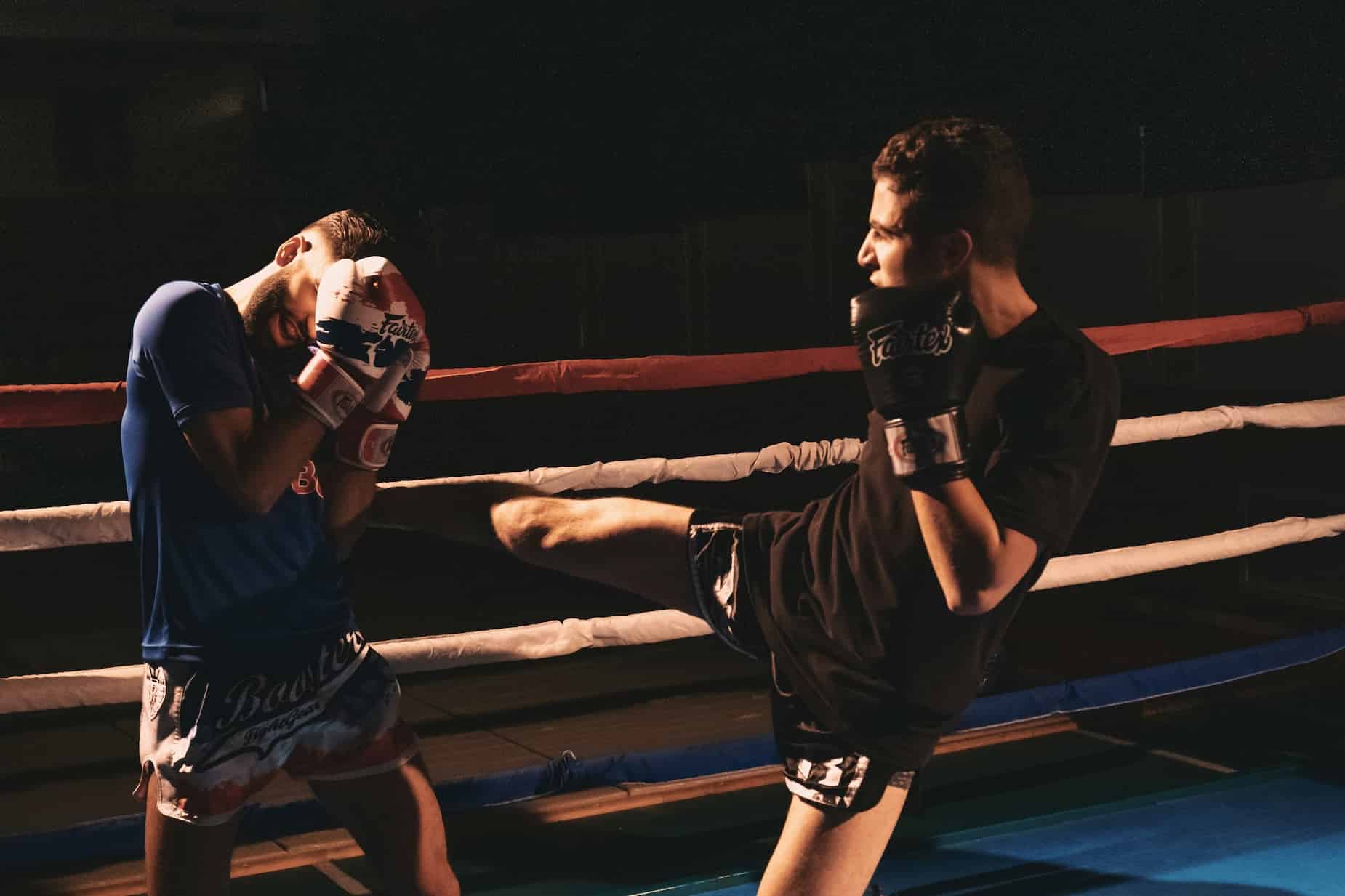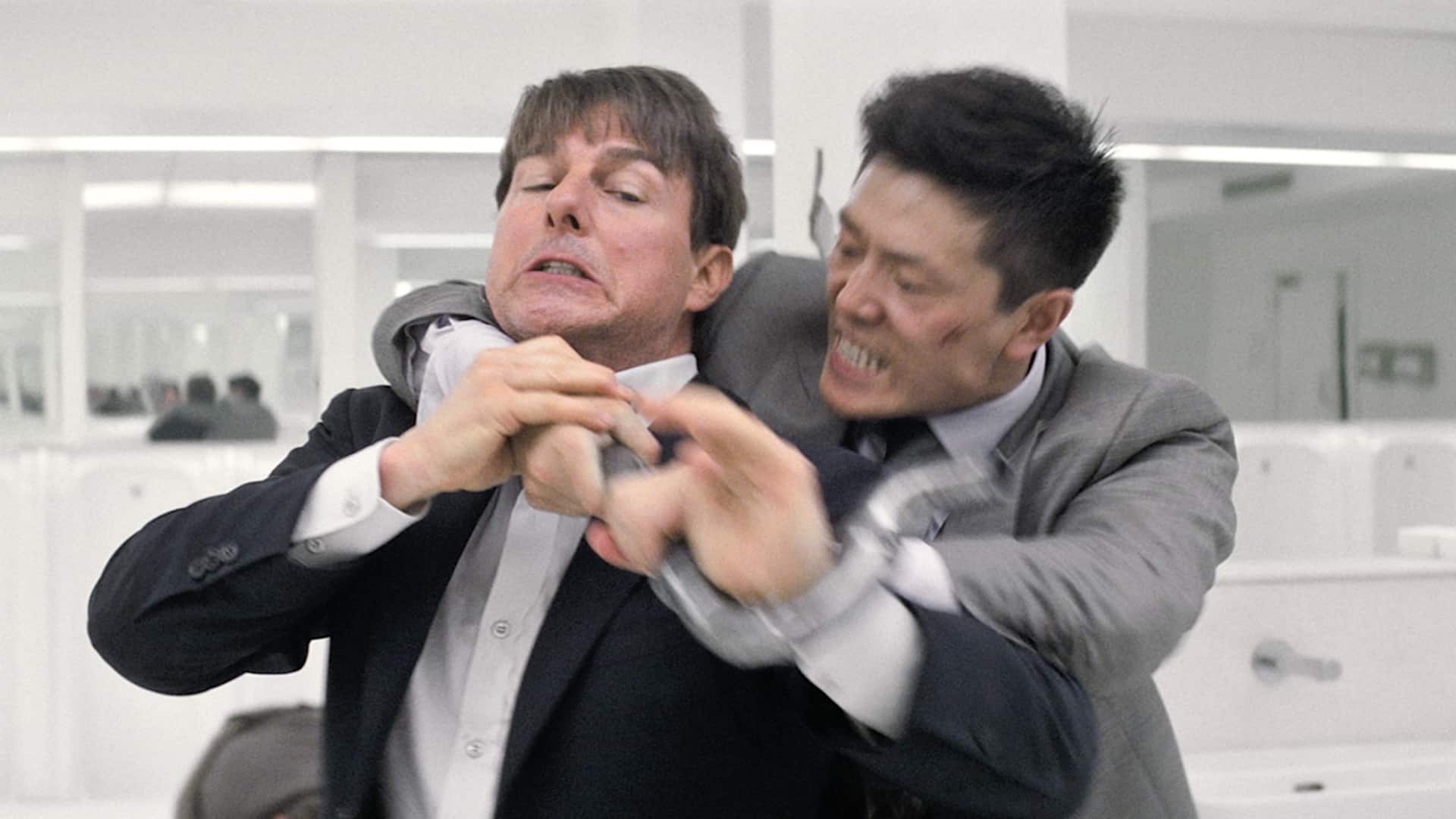I love Mission: Impossible. You love Mission: Impossible. But learning how to shot list and film a fight scene like Mission Impossible can be incredibly difficult.
But’s not…impossible. Okay, stay with me. Today we’re going to go over how to create a shot list for your action movie and dissect a clip from Mission: Impossible — Fallout as an example.
Watch: How to Film Better Fight Scenes
Fight Scenes
Why do we love movie fight scenes?
Bam! Pop! Pow! Great action scenes exhilarate us, and more often than not, feature Jean Claude Van Damme. But there’s nothing worse than watching a high-octane action film that lacks substance. Sure, the spectacle is great, but when it lacks purpose (cough cough, Transformers), it can leave us feeling empty wanting more.
That’s why we love the Mission: Impossible movies.FIGHT SCENES EXAMPLES IN FILMS
Mission: Impossible — Fallout fight scene
The Mission: Impossible franchise is built on incredible action set pieces, thanks to the incredible guts of its cast and crew. In the latest installment, there’s an epic fight inside a bathroom. The fight between Tom Cruise, Henry Cavill, and Liang Yang.
The altercation is only forty-two seconds long, but it’s the paradigm for a great fight scene. So, let’s diagram some things this scene does right.
Mission Impossible - Fallout
First, this bathroom fight scene opens with a bang, well a punch in the throat. We know the story right off the bat. Liang Yang is trying to kill Tom Cruise and Henry Cavill. And he’s doing a good job of it.
The entire scene was shot handheld, and on a wide angle lens. That keeps everything in focus and makes the audience feel like they’re inside the room with these guys.
Fight scenes are all about power dynamic shifts. This one starts out with Tom Cruise and Henry Cavill having the upper hand, but shifts.
How do we detect that in the camera angles?
Well, we start low and stay with Laing Yang as he’s tossed through a mirror. He reacts in the low, but then the camera follows up to eye level as he grabs a pipe.
Once we’re higher up, Yang has the power in the scene; pinning cruise and beating on Cavill. Even though this fight scene is only 42 seconds long, there’s 31 cuts. We always take a beat to regroup and refresh as the power dynamic shifts back and forth.
We don’t hold the shots for long, but they’re crucial to pick up in your shot list if you’re trying to emulate the scene. That’s why it’s so crucial that you shot list and storyboard, so everyone is on the same page.
A film shoot needs to move fluidly...Like Tom Cruise does as he spears this due through a wall.
So, what did we learn? Consider the placement of your cameras when you plan choreography. Have all sorts of angles for the editor to choose. When you put it all together, don’t be afraid to mix and watch cuts.
To do that, you need to shot list and storyboard your fight scenes.
Shot listing A fight scene
How to shot list your fight scenes
When you’re shot listing a fight scene you first have to decide where to place your cameras. You want every punch to feel real, so the angle you see them is crucial.
There’s a lot to think about. Are you tracking with characters? Will you need to pull focus? Do you want a dolly? A Steadicam? Or even some combination of all of the above.


Specific camera movements matter too. Is your wide static? Are you tracking with someone on horseback, or in a helicopter? What about on a crane or using a drone?
You want to capture all these crucial details in your shot list. With StudioBinder shot listing feature, these details are already listed as options, so you only need to check them. This allows you to create creative combinations that make your movie come to life.


Your signature fight scene is only a click away
We also made collaborating and finalizing the shot list fast and efficient. You can share your thoughts, storyboards, and plans with our e-mail client. Just click the name of the person you want to get the shot list and it’ll show up in their inbox seconds later.
This gives you more time to think about the choreography of your fight scene. So let’s dig into how you can create the best fight scenes all on your own.
Tips and tricks for better fight scenes
What make a fight scene great?
1. Great fights pace themselves
Think about the last great movie fight you saw. You’re probably thinking about the amazing fight choreography, jaw-dropping conclusion, that moment when you didn’t think Bruce Willis would make it.
You’re probably not thinking about the beginning.
Full throttle action is amazing, once you’ve earned it. Starting a fight scene with your grittiest action sequence, leaves nothing to be desired and gives you nowhere to reach.
Like any story, you have to build up the characters and establish stakes. The first step of how to shoot a fight scene is saving your biggest bad for the very, very end.


Your fight scene needs to kick ass
2. Wind up your fight choreography
Most people think fight choreography merely encompasses the hard hits, the counter strikes.
But fight choreography also encompasses wind up before the first blow. Characters must realize that a fight is about to happen. In this moment, they may evaluate their opponent, prepare mentally, or dust off their brass knuckles.
Whether you’re writing and/or directing a fight a scene, think of some simple actions that characters can do before they go full-on brawl mode. It can be as simple as gripping a table tightly. It’s just one of many simple fight choreography tips.


Choose simple actions with big emotions in your fight scenes
PRO TIP: HOW TO SHOOT FIGHT SCENES
In the moments before the real fighting breaks out, the characters’ conscious choices of movements and expressions convey their feelings about the fight–how seriously they are taking it, whether or not they’ll play by the rules.
Shifting your camera angle or framing your characters uniquely can communicate to your audience how your characters feel during the fight scene. It can also frame your fight choreography in a new light.
3. Great film fights are a tug of war
As the fight really begins, adrenaline and innate defensive responses take over the characters’ psyches, removing the conscious component of the fight.
Effective fight choreography should feel like a game of tug of war. This is the portion of the fight where the outcome hangs in the balance of the battle–a give and take of power between two characters.
Play with your audience’s emotions and give each side a moment where we think they one side will win, and immediately flip it on its head.
PRO TIP: HOW TO WRITE ACTION SCENES
A great way to change the balance of powers is writing a prop into a fight scene.
As the characters have essentially been sharing the power equally, the addition of a new variable, such as a weapon, shield, or magic wand, can cause the power to shift in a more significant manner.
A prop can also lead to unique fight choreography (i.e. awesome swords). Remember the pipe from Mission: Impossible?Fight scenes are a tug of war!
Related Posts
4. Leave battle scars in your fight scenes
About two thirds through a movie fight scene, one of the two fighters generally takes the upper hand over the situation.
Even as it becomes more clear to the audience, and the characters, who is most likely to claim victory, the battle weakens both fighters. The reality of the situation is thrust upon them and both are seized with a wild desperation to end the battle in their own favor.
Because learning how to shoot fight scenes is the same as learning how to write better movie dialogue, you need to offer a change to your characters as it goes on.
Great fights leave characters emotionally and in most cases physically disfigured. After a fight scene, your character can’t go on existing as the same character.
Put your characters through hell! Fight scenes need to leave a mark
PRO TIP: HOW TO WRITE A FIGHT SCENE
In order to transform your character, consider revealing a key piece of plot information in the middle of your fight. Perhaps your hero finds out that he and his opponent are related, perhaps he finds out that was he was fighting for was a lie.
Whatever information you chose to reveal, do it towards the end of your fight–it can motivate your characters to fight stronger, faster, or even accept defeat.
5. Ride into the sunset (or Hell)
At the end of a good fight, one that really tells a story, the characters have changed and evolved. This can happen only if the fight rises and falls – with a beginning, middle, and end.
This does not simply refer to injuries or hurt pride, although those are certainly important components, but rather to the deeper fundamental changes in a character’s being.
Come up with a new fight scene or rewrite your existing one, adhering to the three-act structure and the tips you learned along the way. As a result, you should find the scene will be better for it and the audience will remain engaged and captivated.
PRO TIP: HOW TO SHOOT A FIGHT SCENE
Play with the first and last images of your fight scene. Perhaps your movie fight starts at night and ends at dawn. Maybe the first shot is on your hero and the last is on your villain…
Directing a fight scene means telling the story through fight choreography, but also through careful placement of your camera and actors.
Taking fight scenes to the next level
How do you shoot a better fight scene?
Keep your story moving throughout it.
Let us know in the comments what you thought about the tips on how to write a better fight scene! What are some of your favorite fight scenes?
Check out our article on creating the perfect antagonist to drum up action in your next fight scene.
Up next:
Learn film blocking!
That was informative and exciting. Now that you know how to shot list your fight scene, it’s time to dig into film blocking. This video is part of our Filmmaking Techniques Masterclass, and can give you ideas where to place your actors to set the tone. Get shooting!
Filmmaking techniques: Blocking for directors→
Showcase your vision with elegant shot lists and storyboards.
Create robust and customizable shot lists. Upload images to make storyboards and slideshows.

